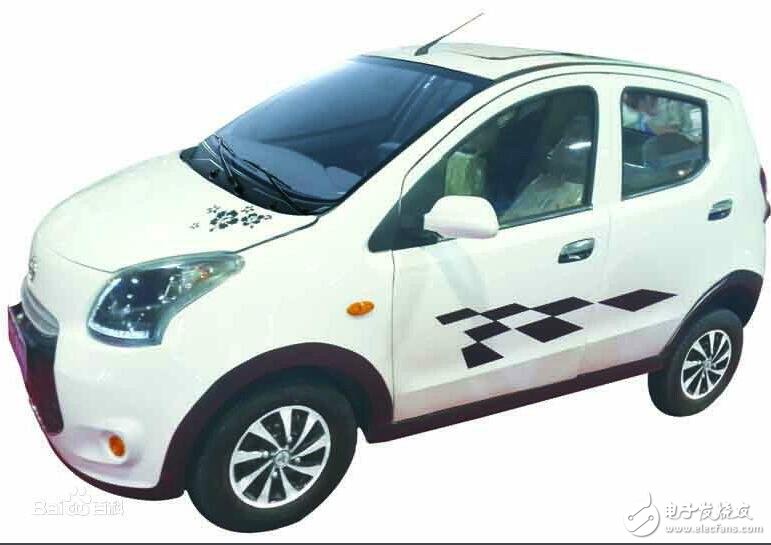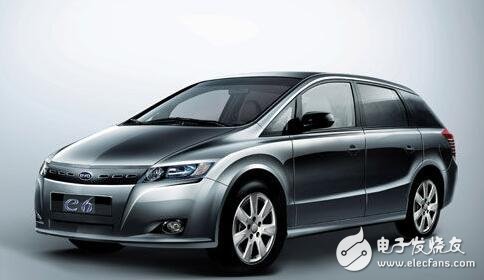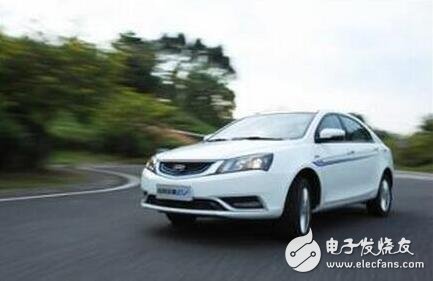Mechanical systems such as electric drive and control systems, drive transmissions, and work devices for completing tasks. The electric drive and control system is the core of electric vehicles and the biggest difference from the internal combustion engine.
The electric drive and control system consists of a drive motor, a power supply and a speed control device for the electric gesep machine. Other devices for electric vehicles are basically the same as those for internal combustion engines.
1, the power supply
The power source supplies electrical energy to the drive motor of the electric vehicle, which converts the electrical energy of the power source into mechanical energy, through the transmission or directly drives the wheels and the working device. At present, the most widely used power source for electric vehicles is lead-acid batteries. However, with the development of electric vehicle technology, lead-acid batteries are lower in energy than global energy-saving and environmental protection nets, have slower charging speeds, and have shorter life spans. The storage gesep global energy-saving environmental protection network pool was replaced. The power sources being developed mainly include sodium-sulfur batteries, nickel-cadmium batteries, lithium batteries, fuel cells, flywheel batteries, etc. The application of these new power sources has opened up broad prospects for the development of electric vehicles.
2, drive motor
The function of the drive motor is to convert the electrical energy of the power source into mechanical energy, through the transmission or directly drive the wheel and the working device. DC series-excited motors are widely used in electric vehicles. These motors have the characteristics of "soft" mechanical gesep.com, which is in line with the driving characteristics of the car. However, due to the existence of reversing sparks, DC motors have lower specific power, lower efficiency, and large maintenance workload. With the development of motor technology and motor control technology, DC brushless motors (BCDM) and switched reluctance motors are bound to be gradually adopted. (SRM) and AC asynchronous motor replaced.
3. Motor speed control device
The motor speed control device is provided for the shifting and direction change of the electric vehicle, and its function is to control the voltage or current of the electric energy saving and environmental protection motive, and complete the control of the driving torque and the rotating direction of the electric motor.
In the early electric vehicles, the speed regulation of the DC motor was achieved by using a series resistor or changing the number of turns of the motor field coil. Because the speed regulation is stepped, and the additional energy consumption or the structure of the motor is complicated, it is rarely used. At present, the thyristor chopper speed regulation is widely used in electric vehicles, and the stepless speed regulation of the motor is realized by uniformly changing the terminal voltage of the motor and controlling the current of the motor. In the continuous development of electronic power technology, it has gradually been replaced by other power transistors (into GTO, MOSFET, BTR and IGBT, etc.) chopper speed control devices. From the perspective of technological development, with the application of new drive motors, the application of electric vehicle speed control to DC inverter technology will become an inevitable trend.
In the rotary direction control of the drive motor, the DC motor relies on the contactor to change the direction of the current of the armature or the magnetic field, thereby realizing the direction change of the motor, which makes the hole-ha circuit complicated and reliable. When driven by an AC asynchronous motor, the change of the steering of the motor only needs to change the phase sequence of the three-phase current of the magnetic field, so that the control circuit can be simplified. In addition, the AC motor and its variable frequency speed control technology make the braking energy recovery control of the electric vehicle more convenient and the control circuit is simpler.
4, transmission
The function of the electric vehicle transmission is to transmit the driving torque of the electric motor to the driving shaft of the automobile. When the electric wheel is used for driving, most of the components of the transmission are often negligible. Since the electric motor can be started with load, the clutch of the conventional internal combustion engine car is not required on the electric vehicle. Since the direction of rotation of the drive motor can be changed by circuit control, the electric vehicle does not require reverse gear in the internal combustion engine. When the motor is steplessly regulated, the electric vehicle can ignore the transmission of the conventional car. When using an electric wheel drive, the electric vehicle can also omit the differential of the conventional internal combustion engine vehicle transmission system.

5, the driving device
The function of the traveling device is to drive the driving torque of the electric motor to the ground through the wheel and drive the wheel to travel. It is identical to the composition of other cars and consists of wheels, tires and suspensions.
6, steering device
The special device is set to realize the turning of the car, and is composed of a steering gear, a steering wheel, a steering mechanism and a steering wheel. The control force acting on the steering wheel deflects the steering wheel by a certain angle through the steering mechanism and the steering mechanism to realize the steering of the vehicle. Most electric vehicles are front-wheel steering, and electric forklifts used in industry often use rear-wheel steering. The electric vehicle's steering gear GESEP.COM has mechanical steering, hydraulic steering and hydraulic power steering.
7, brake device
The brakes of electric vehicles, like other cars, are set for the car to decelerate or stop, usually consisting of a brake and its controls. In an electric vehicle, there is generally an electromagnetic brake device that can realize the power generation operation of the motor by using a control circuit for driving the motor, and convert the energy during the deceleration braking into a current for charging the battery, thereby being recycled.
8, working device
The working device is specially designed for the industrial electric vehicle to complete the operation requirements, such as the lifting device of the electric forklift, the door frame, the fork and the like. The lifting of the fork and the tilting of the gantry are usually done by a motor-driven hydraulic system.

1. Currently 100-300, 300-500 km
2, Tesla and other high-end to 300-500 km, the mainstream is 100-300
In 2013, the BEV global sales champion Nissan Leaf's 24 kWh (kWh Kwh) can only support 130 km of cruising range. BAIC's e150 EV is about 25 kilometers and can run about 150 kilometers. Although studies have said that a cruising range of about 120 kilometers can cover the daily travel needs of at least half of the owners.
In other words, at present, pure electric vehicles are at least suitable for half of the car buyers. However, due to the current rare public charging piles, these potential owners are expected to have a longer range as long as possible. Otherwise, if you drive for dozens of kilometers, you have to worry about not enough electricity. This will really make people very anxious and unhappy.
How far can an electric car run?
The Nissan Leaf, mentioned above, can run 5.5 kilometers at a time. The 60-degree version of the Tesla Model S and the BYD e6 are both 60-degree battery capacity, probably running 300 kilometers. That is, the electricity runs for about 5 kilometers. The above cruising range is in the ideal road condition. For example, if the air conditioner is not turned on, the outdoor temperature will not be particularly high or low, and the traffic will not be blocked and can be moved at a constant speed.
In China, the traffic and climate of big cities are not very good. Year-round congestion and winter may be very cold, and summer may be very hot. So conservatively, it is very good to run 5 kilometers at a time.

Electric cars can be used at high speeds.
When buying electric vehicles, car owners should choose regular manufacturers. Enterprises with new energy vehicle production qualifications should not use low-speed four-wheeled scooters as new energy vehicles. If the owner can't judge, you can log in to the letter to find the "Recommended Model Catalogue for Energy Saving and New Energy Vehicle Demonstration and Application Project".
In addition, from recent media reports, Tianjin will build a network of electric vehicle charging and replacement stations and lay charging stations on the highway. This news indirectly shows that electric cars can definitely be on high speed.
64V Battery Pack ,Lithium Battery Box,Lithium Power Pack,Jackery Battery Pack
Zhejiang Casnovo Materials Co., Ltd. , https://www.casnovo-new-energy.com